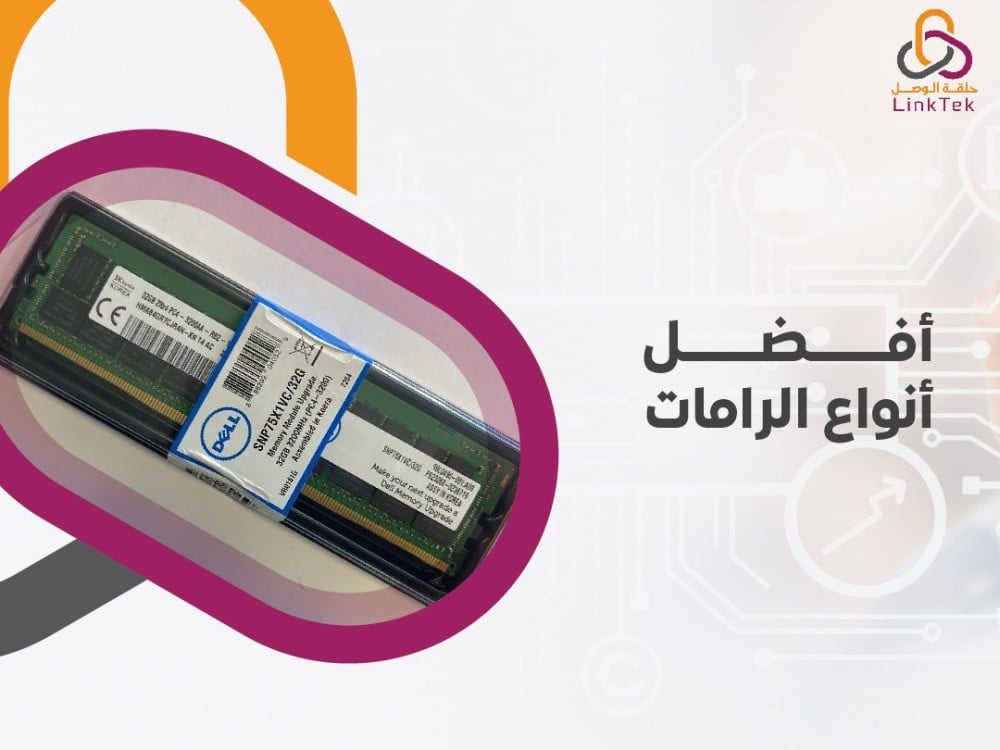
Choosing the right RAM (Random Access Memory) is crucial for ensuring your computer performs optimally, whether you use it for basic tasks, design work, gaming, or running various applications. Here, we provide an overview of the best types of RAM for different use cases and outline the key factors to consider before making a purchase.
The Best Types of RAM
RAM is a significant factor in a computer’s speed and performance. There are two main types of RAM:
1. DRAM (Dynamic Random Access Memory)
DRAM is the primary memory for computers and is widely used. Each cell in DRAM consists of a transistor and a capacitor within an integrated circuit. Data is stored in the capacitor and needs to be refreshed periodically to retain the information. Different generations of DRAM include:
- DDR1: The first generation, introduced in 2000, requires 2.5 to 2.6 volts of power with a maximum density of 128 MB and speeds ranging from 100-200 MHz.
- DDR2: Introduced in 2004, this generation requires 1.8 volts of power, doubling the density to 256 MB and increasing speeds up to 533 MHz.
- DDR3: Launched in 2007, DDR3 provides transfer rates of 8 bits per cycle, with speeds between 800-2133 MHz and consumes 1.5/1.65 volts of power.
- DDR4: This generation is more energy-efficient, needing only 1.2 volts, with speeds ranging from 2400-3600 MHz, and can transfer data between 12800 and 256000 MB per second.
- DDR5: The latest generation, which is becoming widely available, offers frequencies between 3200-6400 MHz initially, with potential speeds up to 8400 MHz in higher-end models. It includes a Power Management Integrated Circuit (PMIC) for adaptive power consumption.
2. SRAM (Static Random Access Memory)
SRAM consists of 4-6 transistors and stores data as long as power is supplied, without the need for periodic refreshing. It is faster and more expensive than DRAM, making it less common in typical computer systems.
Key Factors to Consider When Buying RAM
To choose the right RAM for your needs, consider the following factors:
- Memory Frequency: Measured in MHz, higher frequencies translate to faster performance. The maximum frequency can reach up to 3400 MHz. Higher frequency RAMs are more expensive but provide better speed.
- CAS Latency: This is the delay time of the RAM. Lower latency numbers indicate faster performance. It is represented by a series of numbers, and lower values are preferable.
- Voltage: Each RAM generation (DDR, DDR2, DDR3, DDR4) has a specific voltage requirement. Newer generations typically require lower voltage, which translates to better power efficiency and less heat.
- Capacity: Depending on your usage, the RAM size is crucial. For gaming and applications, 8-12 GB is recommended. For design work, 32 GB or more is ideal.
Choosing the Best RAM for Your Needs
RAM selection varies based on your usage needs:
- Gaming and Applications: Choose high-frequency RAM (8-12 GB) with effective cooling solutions to handle the increased performance demands.
- Design Work: Opt for large-capacity RAM (32 GB) with high frequencies for smooth operation of design software.
- Overclocking Enthusiasts: Focus on RAM with high frequencies and low voltage for optimal performance and stability.
- General Use: For basic tasks, standard frequency RAM with 2-4 GB capacity is sufficient.
By understanding these factors, you can select the best RAM for your computer. Begin your shopping at reputable stores like LinkTech, where you can find a wide variety of high-quality RAM options at competitive prices.

